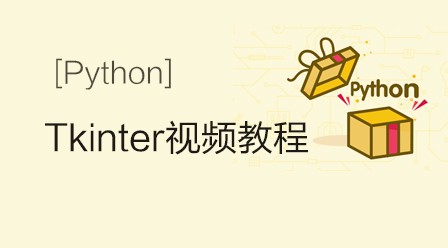
__dir__ -> 看个小例子就知道了
In [1]: class T(object): ...: pass ...: In [2]: t = T() In [3]: t.<Tab>
啥也没有...
In [4]: class T2(object): ...: def __dir__(self): ...: return ['a', 'b'] ...: In [5]: t = T2() In [6]: t. t.a t.b In [7]: dir(t) Out[7]: ['a', 'b']
看出来了把, 不解释, 但是这个__dir__是相对于类的实例有效果的.
__slots__
这个在我初学python的时候就被模糊了, 原来的理解是它的出现替代了__dict__,也就是说你只能给__slots__ 这个变量列表项的属性赋值. 对外的接口减少了,也安全了. 后来看了这篇Saving 9 GB of RAM with Python’s slots. 好久不做运维了,在生产环境究竟怎么样我无法定论, 也提到了,在对象实例很多的时候他能帮助减少内存, 详见https://www.safaribooksonline.com/library/view/python-cookbook-3rd/9781449357337/ch08s04.html. 这里来个小实验(在Hacker News也被讨论过https://news.ycombinator.com/item?id=6750187)
代码例子(我对细节做注释):
# coding=utf-8
import sys
from itertools import starmap, product
class SlotTest(object):
# __slots__ = ['x', 'y', 'z'] 主要对比去掉这句和包含这句程序内存占用
def __init__(self, x, y, z):
self.x = x
self.y = y
self.z = z
def __str__(self):
return "{} {} {}".format(self.x, self.y, self.z)
p = product(range(10000), range(20), [4]) # 创建0-1000 & 0-20 & 4 的笛卡尔积
a = list(starmap(SlotTest, p)) # 相当于对每个SlotTest实例化,实例化的格式是p的长度
print a[0]
sys.stdin.read(1)结果对比:
$pmap -x `ps -ef|grep test_slot.py|grep -v grep|awk '{print $2}'`|grep total # 未使用__slots__
total kB 103496 76480 73728
$pmap -x `ps -ef|grep test_slot.py|grep -v grep|awk '{print $2}'`|grep total # 使用了__slots__
total kB 49960 22888 20136结果很明显,内存占用减少了很多...
__weakref__ 弱引用
首先先说下weakref: 弱引用,与强引用相对,是指不能确保其引用的对象不会被垃圾回收器回收的引用。一个对象若只被弱引用所引用,则被认为是不可访问(或弱可访问)的,并因此可能在任何时刻被回收. 在Python中,当一个对象的引用数目为0的时候,才会被从内存中回收. 但是被循环引用呢?
In [1]: import weakref In [2]: import gc In [3]: class Obj(object): ...: def a(self): ...: return 1 ...: In [4]: obj = Obj() In [5]: s = obj In [6]: gc.collect() # 不可达引用对象的数量 Out[6]: 3 In [7]: print s is obj True In [8]: obj = 1 # 最初的被引用的对象改变了. In [9]: gc.collect() Out[9]: 0 In [10]: s is None # s还是指向了Obj 引用计数为1 Out[10]: False In [11]: s Out[11]: <__main__.Obj at 0x2b36510> ----华丽的分割一下 In [12]: obj = Obj() In [13]: r = weakref.ref(obj) # 让obj变成那个弱引用 In [14]: gc.collect() Out[14]: 211 In [15]: r() is obj True In [16]: obj = 1 In [17]: gc.collect() Out[17]: 0 In [18]: r() is None # 弱引用计数器没有增加,所以当obj不在引用Obj的时候,Obj对象就被释放了 Out[18]: True
好吧, 我的总结是弱引用是个好东西, 但是加了__slots__就不支持弱引用了. 所以需要__weakref__
In [9]: class T3(object):
...: __slots__ = []
...:
In [10]: class T4(object):
....: __slots__ = '__weakref__' # 这样就支持了weakref
....:
In [11]: import weakref
In [12]: t3 = T3()
In [13]: t4 = T4()
In [14]: weakref.ref(t3)
---------------------------------------------------------------------------
TypeError Traceback (most recent call last)
<ipython-input-14-bdb7ab7ac3bc> in <module>()
----> 1 weakref.ref(t3)
TypeError: cannot create weak reference to 'T3' object
In [15]: weakref.ref(t4)
Out[15]: <weakref at 0x2766f70; to 'T4' at 0x2586fd8>__contains__ 判断某值 in/not in 实例
In [1]: class NewList(object): ...: def __init(self, values): ...: self.values = values ...: def __contains__(self, value): ...: return value in self.values ...: In [2]: l = NewList([1, 2, 3, 4]) In [3]: 4 in l Out[3]: True In [4]: 10 in l Out[4]: False __missing__
最初看这个特殊方法是看python标准库的源码的时候(collections#L421):
class Counter(dict):
...
def __missing__(self, key):
'The count of elements not in the Counter is zero.'
# Needed so that self[missing_item] does not raise KeyError
return 0什么意思呢?
In [6]: c = collections.Counter({'a':1})
In [7]: c['b'] # 没有键的count设置默认值0
Out[7]: 0









